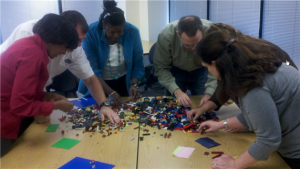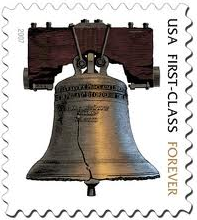 Because I wanted to ensure people taking my class were learning things that are actually on the PMI-ACP exam, I thought it necessary to actually take the test. Sure, I was an independent reviewer of the PMI-ACP content but I was not part of the team who wrote the exam. Let me just say, I think those who wrote the exam did us all proud. I know it sounds sick but I really enjoyed taking this exam. It wasn't too hard or easy. For a v1.0 exam, it's pretty darn good. If you've been leveraging Agile for several years, I think you could pass it (in its current form). Let me caveat that by saying you'd have to be properly leveraging Lean, XP, and Scrum for several years. In all seriousness, there are people who still think cowboy coding or having no formal process or documentation makes them "agile". This exam pays its respects to the values and principles of agile practices and to those who wrote the Agile Manifesto just 10 years ago.
Now, considering every exam will be different, you can't take my testing experience as gospel to prepare. But, you can focus your attention in certain areas. I'm pretty certain I won't upset anyone with this blog post. I'm not exposing any super-secret strategy to game the exam. I remember taking the PMP and getting frustrated because I felt like the goal was to trick me, not test me. Thankfully, the PMI-ACP is not crafted like the PMP. It's written in a tone an everyday Agilist will understand.
Because I wanted to ensure people taking my class were learning things that are actually on the PMI-ACP exam, I thought it necessary to actually take the test. Sure, I was an independent reviewer of the PMI-ACP content but I was not part of the team who wrote the exam. Let me just say, I think those who wrote the exam did us all proud. I know it sounds sick but I really enjoyed taking this exam. It wasn't too hard or easy. For a v1.0 exam, it's pretty darn good. If you've been leveraging Agile for several years, I think you could pass it (in its current form). Let me caveat that by saying you'd have to be properly leveraging Lean, XP, and Scrum for several years. In all seriousness, there are people who still think cowboy coding or having no formal process or documentation makes them "agile". This exam pays its respects to the values and principles of agile practices and to those who wrote the Agile Manifesto just 10 years ago.
Now, considering every exam will be different, you can't take my testing experience as gospel to prepare. But, you can focus your attention in certain areas. I'm pretty certain I won't upset anyone with this blog post. I'm not exposing any super-secret strategy to game the exam. I remember taking the PMP and getting frustrated because I felt like the goal was to trick me, not test me. Thankfully, the PMI-ACP is not crafted like the PMP. It's written in a tone an everyday Agilist will understand.
Here is my bullet list for public consumption. The rest I will reserve for my PMI-ACP classes. (shameless plug)
- Know the Agile Manifesto Values and Principles. Understand them. Don't just memorize them.
- Have an end-to-end understanding of Scrum.
- Know and understand the key roles of Scrum.
- Know and understand the artifacts of Scrum.
- Understand what are and why we use big visible charts or information radiators.
- Be able to read a burndown chart and offer a few scenarios that would explain its appearance.
- Understand all of the Scrum meetings. Who is there? Why? What happens and when?
- Understand Scrum from a ScrumMaster perspective.
- Understand Scrum from a Product Owner perspective.
- Understand Scrum from an empowered Team perspective.
- Know and understand the XP (eXtreme Programming) roles and who does what.
- Understand Test Driven Development. Know how it works and why it's valuable.
- Understand Continuous Integration. Know how it works and why it's valuable.
- Understand the Lean Software Development Principles
- Know what Lean Portfolio Management is and how your organization could benefit from it.
- Understand what Value Stream Mapping is and how to do it
- Understand the basics of Kanban
- Understand what WIP is and why it works.
- Know what Osmotic Communications is.
- Understand what makes a Servant Leader and what they do.
- Understand Velocity and it's usefulness.
- Understand Risk Burn Down Charts
- Know about Risk Audit Meetings
- Know Agile Estimation techniques
- Understand the Definition of "Done"
- Know how to write and identify good User Stories.
- Know what Personas are and how to use them.
- Understand why and when you would use AgileEVM (don't worry about how!)
Good luck!




